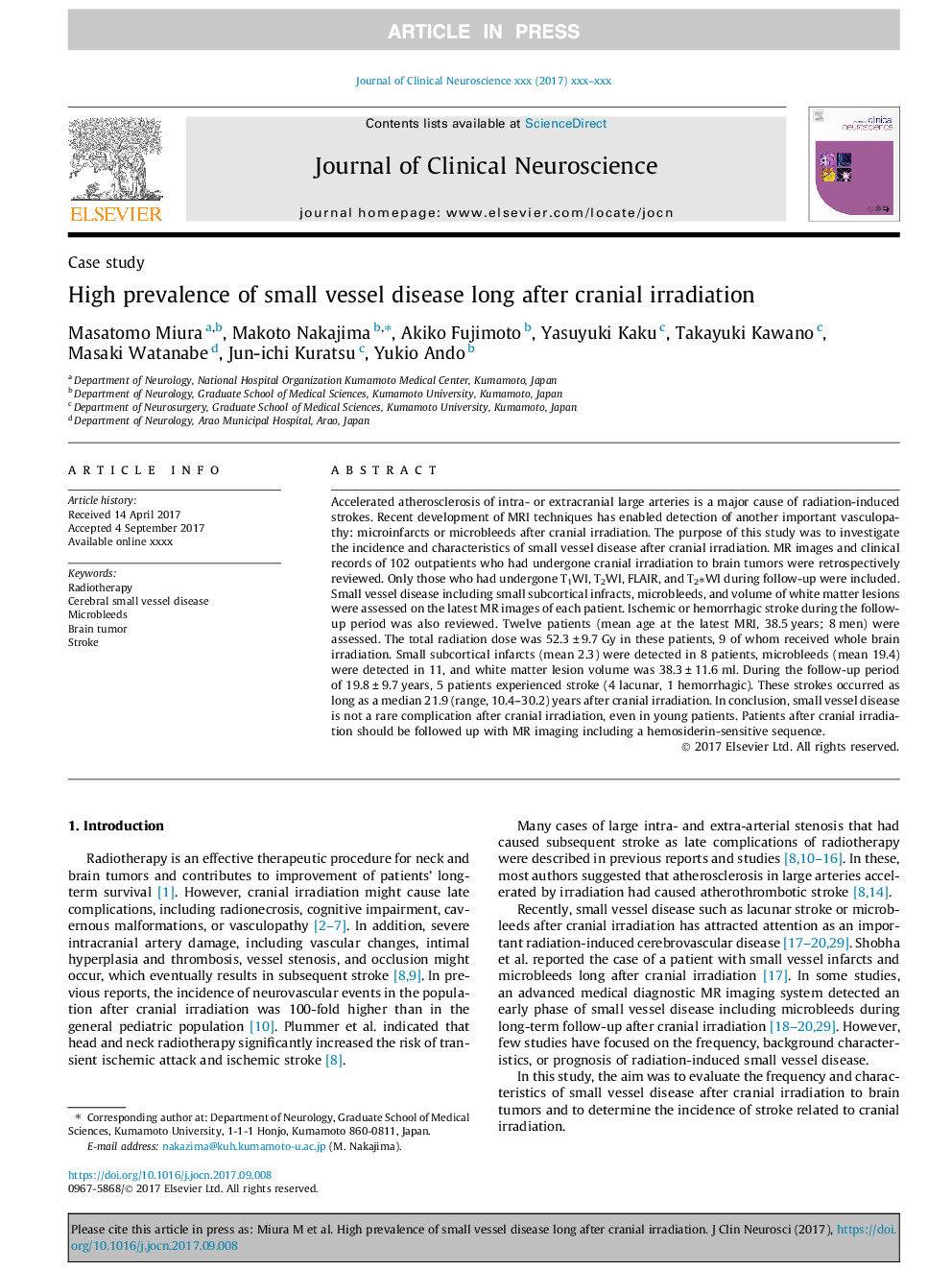| Article ID | Journal | Published Year | Pages | File Type |
|---|---|---|---|---|
| 8685482 | Journal of Clinical Neuroscience | 2017 | 7 Pages |
Abstract
Accelerated atherosclerosis of intra- or extracranial large arteries is a major cause of radiation-induced strokes. Recent development of MRI techniques has enabled detection of another important vasculopathy: microinfarcts or microbleeds after cranial irradiation. The purpose of this study was to investigate the incidence and characteristics of small vessel disease after cranial irradiation. MR images and clinical records of 102 outpatients who had undergone cranial irradiation to brain tumors were retrospectively reviewed. Only those who had undergone T1WI, T2WI, FLAIR, and T2âWI during follow-up were included. Small vessel disease including small subcortical infracts, microbleeds, and volume of white matter lesions were assessed on the latest MR images of each patient. Ischemic or hemorrhagic stroke during the follow-up period was also reviewed. Twelve patients (mean age at the latest MRI, 38.5 years; 8 men) were assessed. The total radiation dose was 52.3 ± 9.7 Gy in these patients, 9 of whom received whole brain irradiation. Small subcortical infarcts (mean 2.3) were detected in 8 patients, microbleeds (mean 19.4) were detected in 11, and white matter lesion volume was 38.3 ± 11.6 ml. During the follow-up period of 19.8 ± 9.7 years, 5 patients experienced stroke (4 lacunar, 1 hemorrhagic). These strokes occurred as long as a median 21.9 (range, 10.4-30.2) years after cranial irradiation. In conclusion, small vessel disease is not a rare complication after cranial irradiation, even in young patients. Patients after cranial irradiation should be followed up with MR imaging including a hemosiderin-sensitive sequence.
Related Topics
Life Sciences
Neuroscience
Neurology
Authors
Masatomo Miura, Makoto Nakajima, Akiko Fujimoto, Yasuyuki Kaku, Takayuki Kawano, Masaki Watanabe, Jun-ichi Kuratsu, Yukio Ando,
